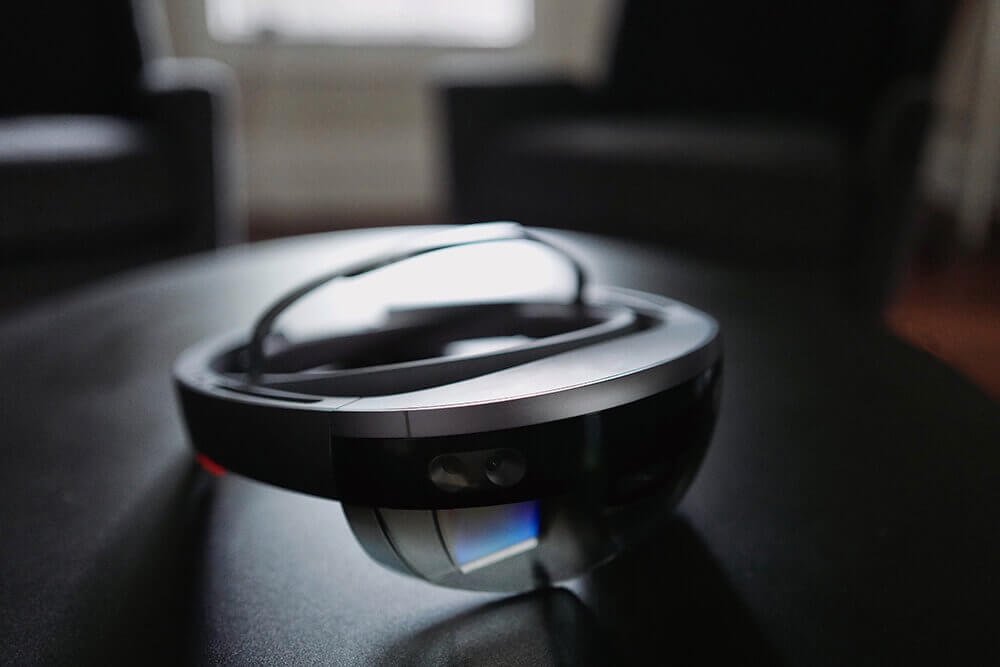The technology behind virtual reality (VR) and augmented reality (AR) isn’t new. In fact, it’s already used day-to-day by millions of people across the globe in everything from gaming to construction. VR is all about creating a virtually constructed environment, whereas AR attempts to blend virtual elements into real life.
For a great example of AR in action, just take a look at Pokémon Go. Using your phone’s camera, the app seamlessly inserts Pokémon (Pocket Monsters, in case you wondered…) into your surroundings for you to catch, wherever you are and whenever you want to play. It’s even sophisticated enough to use your GPS to cleverly place water-based Pokémon by rivers and forest dwelling Pokémon in the woods. AR as a technology is evolving rapidly as more ingenious ways to blend virtual elements with real life are thought up. Although commercially unsuccessful, the experimental Google Glass was a major step forward, and Samsung have already patented ‘smart contact lenses’ with built in processors and cameras.
Virtual reality is a lot more commonplace. A leading example is the Samsung Gear VR headset, which can be used with their range of smartphones to immerse the user in game worlds or watch films uninterrupted.
The use of AR and VR in the workplace has huge potential as the technology improves. Surgeons and pilots already train in virtual simulations and architects can use AR to share plans and ideas, but what about other professions? We believe we’ll see an emergence of AR and VR technology in the field of talent acquisition, and here’s how…
A chance to showcase the work environment
One of the most common questions asked by candidates at the end of an interview is, “What is it like to work there?” or “What is the office culture like?”. Wouldn’t it be great if recruiters could show potential candidates the workplace first hand? With VR, the idea of a ‘tour’ could take on a whole new meaning. VR can take someone to places they couldn’t normally go, to the moon or into the heart of a nuclear reactor. The greater emotional impact from being in the middle of the action makes it a more immersive experience than watching a video.
What’s different in 2017 is that headsets are low cost and becoming commonplace, making it feasible for recruiters to use VR to reach candidates.
Assessing a candidate’s ability to work as part of a team
One of the best ways to weigh up a candidate’s ability to work in a group is to observe a team challenge. Unfortunately, that’s not always easy or practical for a recruiter. VR solves that problem. Imagine an ‘Escape Room’ challenge where you lock up a group of candidates with 1 hour to find clues and solve puzzles to secure their escape. With VR, this sort of exercise is a doddle for candidates and gives recruiters an opportunity to see candidates interact.
Figuring out what makes a candidate tick
I have a friend, a Head Teacher at a good school, who hires graduates each year. He swears you can tell who can teach within one minute of watching someone in front of a classroom. While it may be difficult to replicate teaching a classroom in VR, the point is that there are some things that can’t be ascertained about a client in an interview; how they’ll perform in everyday problem solving tasks or how they socialise in the workplace, or how they’ll interact with kids. AR and VR provide brand new ways to put candidates into these situations in a practical and cost-effective way. It could help recruiters assess candidates more accurately and match them with the most suitable role.
Cultural and behavioural factors
Did you know that in Japan, respect is demonstrated not just by bowing but by how long and deep you bow? Or that the wet napkin you receive in restaurants should be used to wash your hands and should not touch your face? Or that returning to the living room in toilet slippers is very bad form? How do you explain to a candidate the social and cultural differences that come with working in Japan or the Middle East? Virtual reality allows candidates to experience any environment in a real-life simulation that’s entirely risk free, and can be used to teach social cues, etiquette and even language. Oil, finance, electronics – many industries spring to mind where employees have to navigate diverse cultures and VR is a great way to give staff some exposure to the culture before it really counts.
The Nervous Candidate
We’ve talked about how VR and AR could help recruiters find the right candidates, but could VR help candidates? Interviewing for any role can be a nerve-wracking and anxious experience, particularly if the candidate is considering an environment that’s outside their usual comfort zone. VR and AR could help to ease the stress associated with the interview process in a much more affordable (and arguably more effective) way. What better way to drill candidates and give them confidence than have them practice in dummy interviews? Costly, unless you use VR & an avatar to do the interviews. Or perhaps the candidate has to do a presentation but is terrified of public speaking? Why not calm their nerves by putting them in front of a virtual auditorium?
Final Thoughts…
All recruiters hope to engage and retain the best candidates and to make the hiring process as efficient as possible. Although there’s no one size fits all and VR is in its infancy, the opportunities it presents are exciting and it’s well worth keeping a keen eye on developments this year.
Our Applicant Tracking System won ‘Innovation of the Year’ at the Digital Entrepreneur Awards in November 2016. Find out more about us and get in touch.




